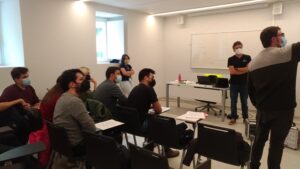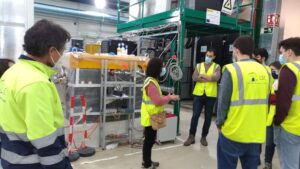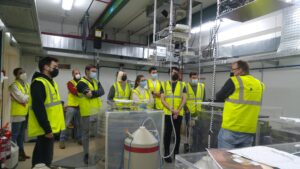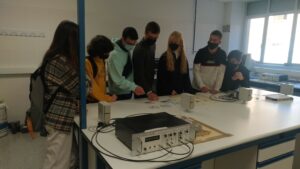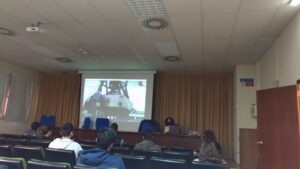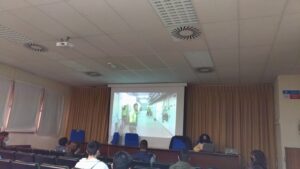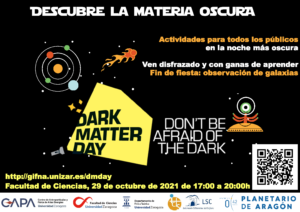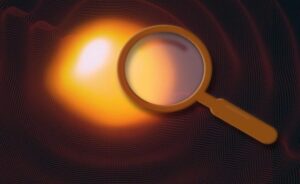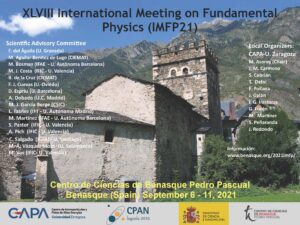
Star forming emission line galaxies at z~1 as cosmological tracers
El 1 de Julio a las 12.10 h. tendrá lugar el seminario organizado por el Centro de Astropartículas y Física de Altas Energías “Star forming emission line galaxies at z~1 as cosmological tracers”, impartido por Violeta Gonzalez Perez, investigadora del programa «Atracción de Talento» en el CIAFF de la Universidad Autónoma de Madrid.
El seminario se realizará a través del siguiente enlace zoom. No te lo pierdas!
Abstract:
Current and future cosmological surveys (SDSS-IV/eBOSS, DESI, Euclid) are targeting star forming galaxies emission line galaxies at z~1. These galaxies are dominated by [OII] emitters when the selection is done using optical instruments. This talk will start with an overview of the different techniques to study the formation and evolution of galaxies computationally to then focus on the modelling of star forming emission line galaxies (ELGs). Using a state-of-the-art model of galaxy formation and evolution we explore the global properties of [OII] emitters, including their large scale environment. Model galaxies are selected with cuts in different properties such that the samples can be directly compared with a range of both narrow and wide observational surveys: DEEP2, VVDS, eBOSS and DESI. The selected [OII] emitters are hosted by haloes with halo masses above 10^10.3 Msun/h, with ~90% of them being central star-forming galaxies. The predicted mean halo occupation distributions of [OII] emitters has a shape typical of that inferred for star-forming galaxies, with the contribution from central galaxies being far from the canonical step function. The mean halo occupation distribution for central [OII] emitters can be described as the sum of an asymmetric Gaussian for disks and a step function for spheroids, which plateaus below unity. The large scale environment of model galaxies is obtained for fixed number density samples, using a velocity-shear-tensor and a tidal-tensor algorithms. About half of the fixed number density ELGs live in filaments, following the distribution of SFR selected galaxies with the same number density, and a third in cosmic sheets. SFR cut selected ELGs and general galaxies with equal number density, have the same large scale bias but their clustering below separations of 1Mpc/h are different. Although as a first approximation the samples that will be targeted by DESI, 4MOST, MSE, etc. are simply star forming galaxies, the model ELGs do trace a slightly different large scale environment.
https://indico.capa.unizar.es/event/18/
https://rediris.zoom.us/j/85967597081


